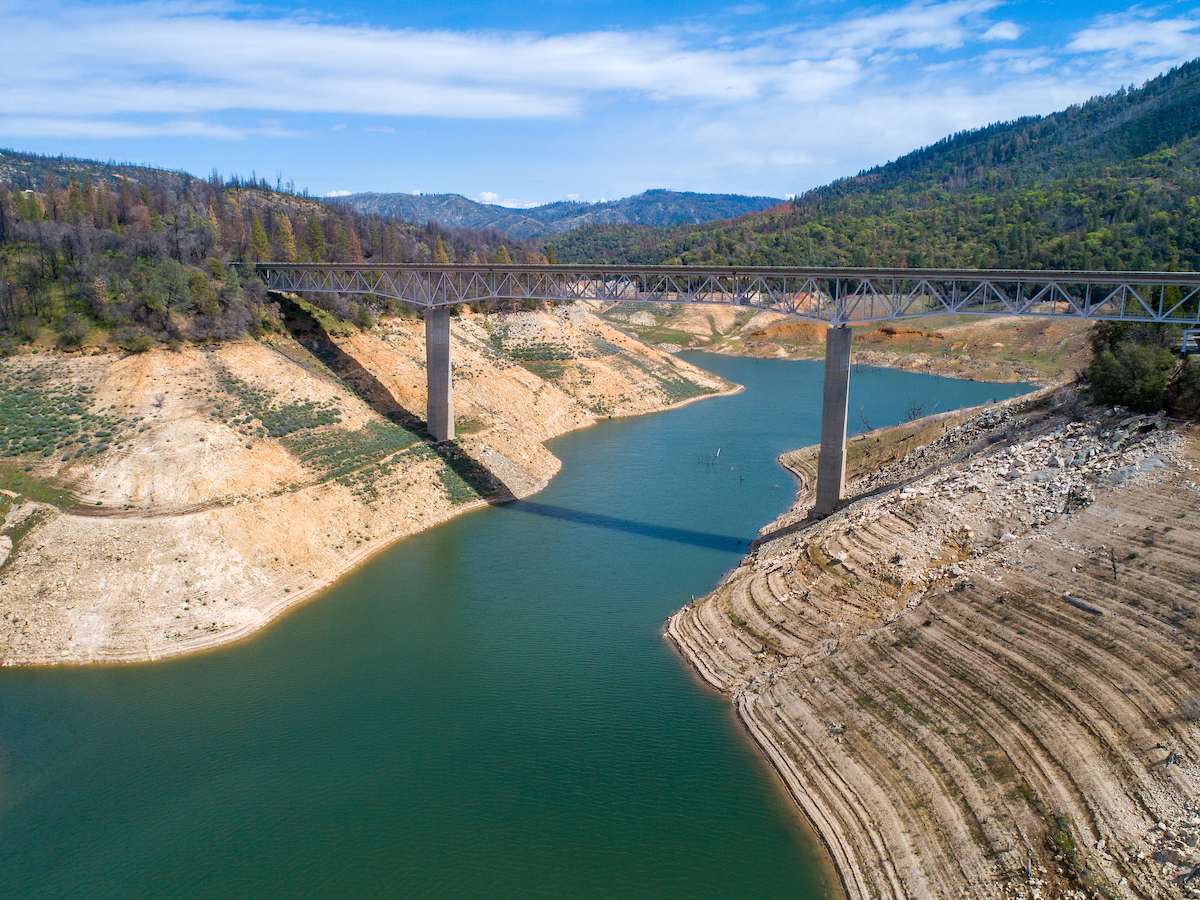Executive order calls on local water suppliers to activate drought contingency plans
Governor orders Water Board to consider ban on watering of decorative grass around commercial, industrial and institutional buildings
From the Office of the Governor:
Following the driest first three months of a year in the state’s recorded history, Governor Gavin Newsom today took steps to drive water conservation at the local level, calling on local water suppliers to move to Level 2 of their Water Shortage Contingency Plans, which require locally-appropriate actions that will conserve water across all sectors, and directing the State Water Resources Control Board to consider a ban on the watering of decorative grass at businesses and institutions.
In an executive order signed today, the Governor ordered the State Water Resources Control Board (SWRCB) to evaluate the adoption of regulations banning irrigation of “non-functional” turf (or grass), such as decorative grass adjacent to large industrial and commercial buildings. The ban would not include residential lawns or grass used for recreation, such as school fields, sports fields and parks. The Department of Water Resources estimates this ban alone will result in potential water savings of several hundred thousand acre-feet. An acre-foot of water serves the needs of approximately three households for a year.
“While we have made historic investments to protect our communities, economy and ecosystems from the worsening drought across the West, it is clear we need to do more,” said Governor Newsom. “Today, I am calling on local water agencies to implement more aggressive water conservation measures, including having the Water Board evaluate a ban on watering ornamental grass on commercial properties, which will drive water use savings at this critical time. Amid climate-driven extremes in weather, we must all continue to do our part and make water conservation a way of life.”
A copy of the executive order can be found here.
As the drought persists into a third year and conditions worsen amidst dry, hot weather, today’s order called on the SWRCB to consider requiring urban water suppliers to activate, at a minimum, Level 2 of their customized Water Shortage Contingency Plans. These plans, required by state law, are developed by local water agencies to navigate drought and each plan is customized based on an agency’s unique infrastructure and management. Triggering Level 2 of these plans involves implementing water conservation actions to prepare for a water shortage level of up to 20 percent. For example, in many communities, this would mean reducing the number of days that residents can water outdoors, among other measures.
To further conserve water and strengthen drought resiliency in this critically dry year, the Governor is encouraging suppliers, where appropriate, to consider going above and beyond the Level 2 of their water shortage contingency plans, activating more ambitious measures. The Governor has also ordered state agencies to submit funding proposals to support the state’s short- and long-term drought response, including emergency assistance to communities and households facing drought-related water shortages, facilitating groundwater recharge and wastewater recycling, improvements in water use efficiency, protecting fish and wildlife, and minimizing drought-related economic disruption.
Today’s executive order includes several other provisions that will protect all water users:
- Ensuring Vulnerable Communities Have Drinking Water
- Cuts red tape so communities that need access to emergency hauled or bottled water can get it immediately
- Safeguarding Groundwater Supplies
- Requires local permitting authorities to coordinate with Groundwater Sustainability Agencies to ensure new proposed wells do not compromise existing wells or infrastructure, as 85 percent of public water systems rely heavily on groundwater during drought
- Streamlines permitting for groundwater recharge projects that help to refill aquifers when rains come
- Protecting Vulnerable Fish And Wildlife
- Expedites state agency approvals for necessary actions to protect fish and wildlife where drought conditions threaten their health and survival
- Preventing Illegal Water Diversions
- Directs the Water Board to expand site inspections in order to determine whether illegal diversions are occurring
The Governor’s California Comeback Plan invests $5.2 billion over three years to support the immediate drought response and build water resilience, including funding to secure and expand water supplies; bolster drought contingency planning and multi-benefit land repurposing projects; support drinking water and wastewater infrastructure, with a focus on small and disadvantaged communities; advance Sustainable Groundwater Management Act implementation to improve water supply security and quality; and support wildlife and habitat restoration efforts, among other nature-based solutions.
Earlier this month, Governor Newsom advanced an additional $22.5 million to bolster the state’s drought response. Of this funding, $8.25 million will be used to increase educational and outreach efforts, including through the Save Our Water campaign, which is providing Californians with water-saving tips via social media and other digital advertising. The Governor’s California Blueprint proposal includes $750 million in additional drought funding, $250 million of which was set aside as a drought reserve to be allocated in the spring, based on conditions and need.
More information on the state’s response to the drought and informational resources available to the public are available at https://drought.ca.gov/.



